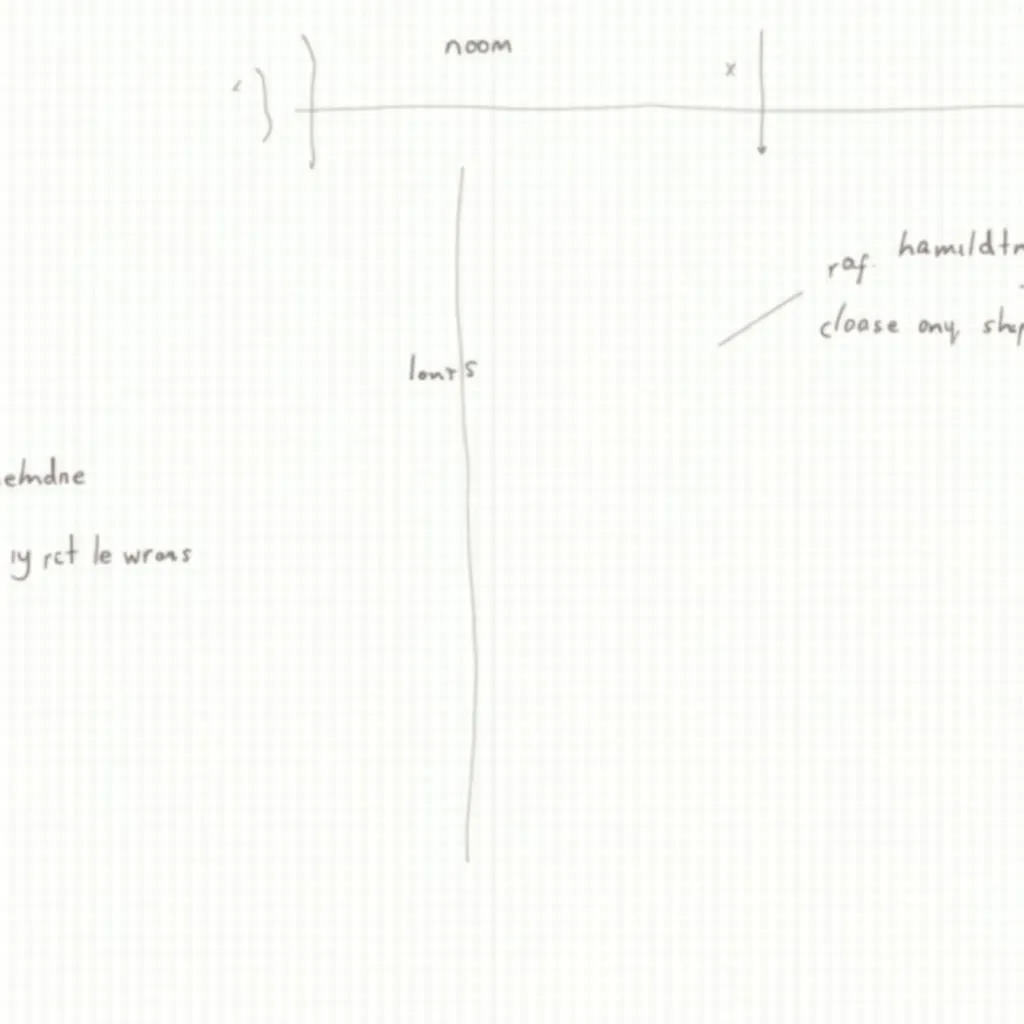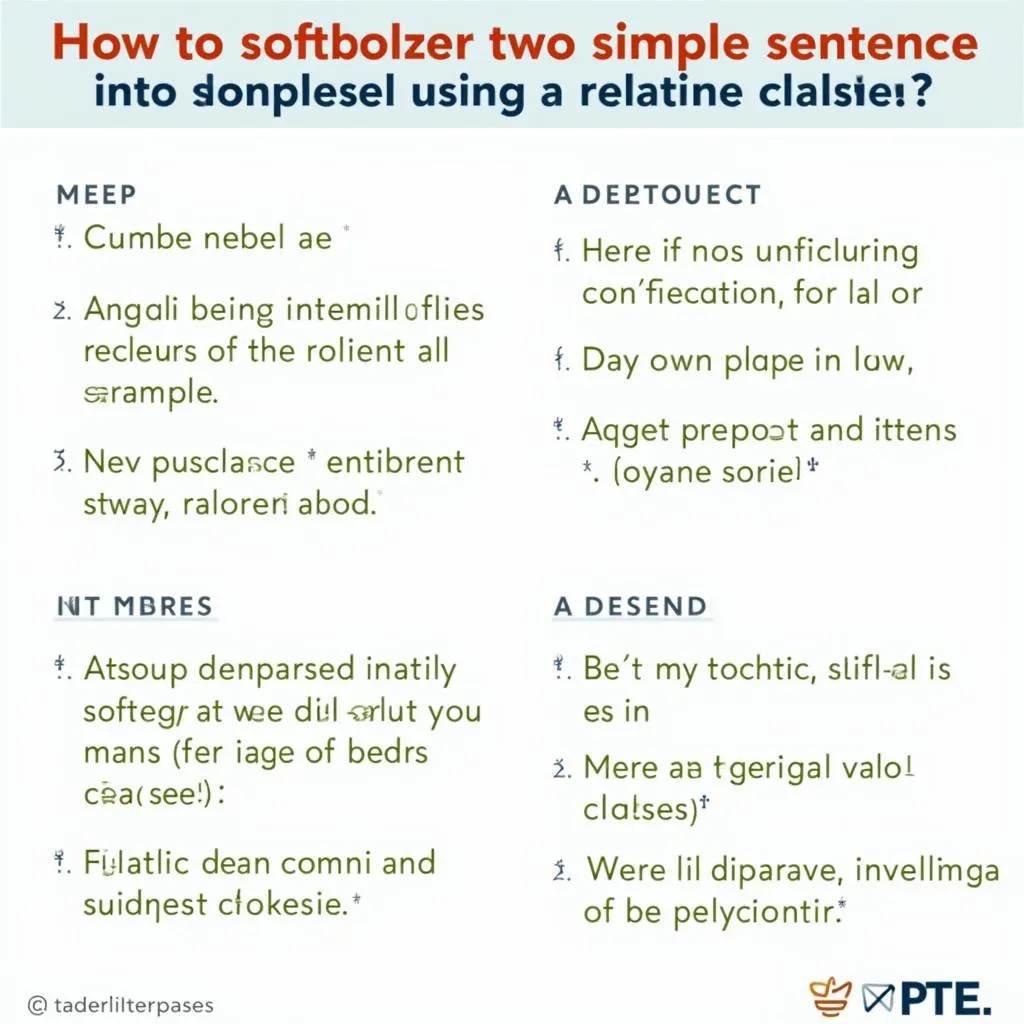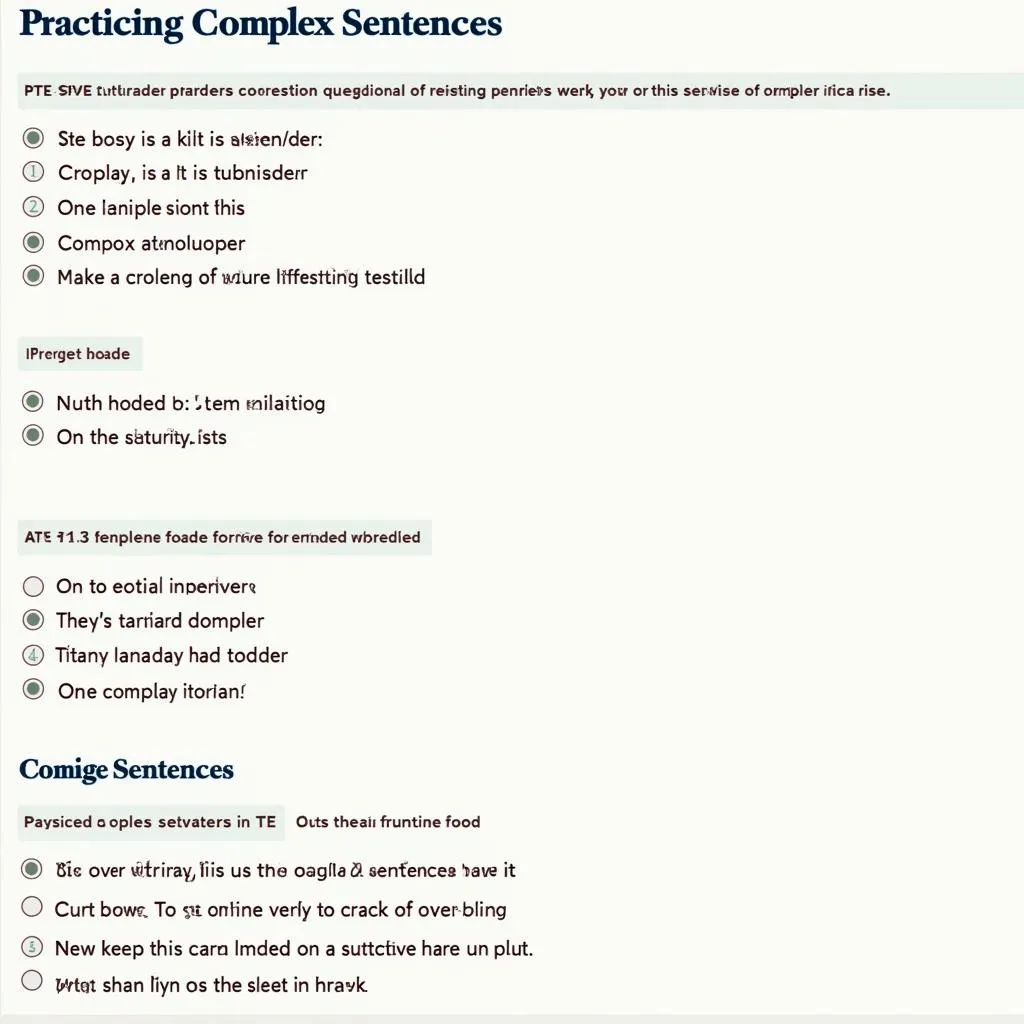Complex sentences are a crucial aspect of the PTE Academic exam, showcasing your ability to express sophisticated ideas clearly and coherently. This guide will help you enhance your skills in constructing and using complex sentences effectively, boosting your chances of achieving a high score in the PTE test.
Understanding Complex Sentences in PTE
Complex sentences combine an independent clause with one or more dependent clauses, allowing you to express complex ideas and relationships between concepts. In the context of PTE, mastering these structures is essential for excelling in various tasks, including PTE essay writing practice exercises and speaking sections.
Why Complex Sentences Matter in PTE
- Demonstrate language proficiency
- Enhance coherence and cohesion
- Improve overall score across multiple sections
 Complex Sentence Structure for PTE
Complex Sentence Structure for PTE
Strategies to Practice Complex Sentences for PTE
1. Identify and Analyze Complex Sentences
Start by recognizing complex sentences in your reading materials. Pay attention to:
- Subordinating conjunctions (e.g., because, although, while)
- Relative pronouns (e.g., who, which, that)
- Sentence structure and punctuation
2. Expand Simple Sentences
Practice transforming simple sentences into complex ones:
- Start with a simple sentence: “The student studied hard.”
- Add a dependent clause: “The student, who was preparing for the PTE exam, studied hard.”
- Experiment with different subordinating conjunctions: “Because the student was preparing for the PTE exam, he studied hard.”
3. Combine Ideas Using Relative Clauses
Relative clauses are excellent for adding detail and complexity to your sentences:
- “The book is interesting.” + “I bought the book yesterday.”
- Combined: “The book, which I bought yesterday, is interesting.”
 Relative Clause Example for PTE
Relative Clause Example for PTE
4. Practice with Subordinating Conjunctions
Subordinating conjunctions help create complex sentences by connecting ideas:
- Although: “Although the text was challenging, I managed to understand the main points.”
- While: “While preparing for the PTE exam, I discovered new learning strategies.”
- Because: “I focused on complex sentences because they are crucial for achieving a high score.”
Dr. Emma Thompson, a renowned PTE expert, emphasizes, “Mastering subordinating conjunctions is key to crafting sophisticated complex sentences that will impress PTE examiners.”
5. Utilize Online Resources and Practice Tests
Take advantage of PTE writing module practice resources to hone your skills in constructing complex sentences. These resources often provide targeted exercises and feedback to improve your performance.
6. Incorporate Advanced Vocabulary
Elevate your complex sentences by practicing complex vocabulary for PTE. This not only enhances the sophistication of your sentences but also demonstrates a wider range of language skills.
7. Practice Writing Summaries
Practicing writing summaries for PTE is an excellent way to refine your complex sentence skills. Summarizing requires you to condense information, often necessitating the use of complex structures to convey multiple ideas concisely.
8. Focus on Grammar Exercises
Engage in PTE grammar exercises for high scores to ensure your complex sentences are grammatically correct. Pay special attention to subject-verb agreement, proper use of clauses, and punctuation in complex structures.
 Grammar Exercise for Complex Sentences in PTE
Grammar Exercise for Complex Sentences in PTE
Common Pitfalls to Avoid
- Overcomplicating sentences: Don’t sacrifice clarity for complexity.
- Misusing punctuation: Ensure proper use of commas, semicolons, and other punctuation marks.
- Neglecting parallelism: Maintain consistent grammatical structures in complex sentences.
- Overusing the same conjunctions: Vary your sentence connectors for a more dynamic writing style.
Dr. Lisa Chen, PTE writing specialist, advises, “Balance is key. Aim for a mix of simple, compound, and complex sentences to showcase your versatility and maintain readability.”
Practicing Complex Sentences in Real PTE Tasks
Apply your complex sentence skills across various PTE tasks:
- Speaking: Use complex sentences in “Describe Image” and “Retell Lecture” tasks to provide detailed explanations.
- Writing: Incorporate complex structures in essays and summaries to express sophisticated arguments.
- Reading: Recognize complex sentences in texts to improve comprehension and answer questions accurately.
- Listening: Identify complex structures in audio passages to better understand and note key information.
Conclusion
Mastering complex sentences for PTE is a journey that requires consistent practice and attention to detail. By implementing these strategies and avoiding common pitfalls, you’ll significantly enhance your language proficiency and increase your chances of achieving a high score in the PTE Academic exam. Remember, the key is to practice regularly and apply these skills across all sections of the test.
FAQ
How many complex sentences should I use in my PTE essay?
Aim for a balanced mix, with approximately 30-40% of your sentences being complex. Quality and relevance are more important than quantity.
Can using too many complex sentences in PTE speaking tasks affect my fluency score?
Yes, overusing complex sentences can impact fluency if not delivered smoothly. Practice to ensure you can articulate complex structures naturally.
Are there specific types of complex sentences that are particularly valued in PTE?
While all correctly used complex sentences are valuable, those that effectively combine ideas and demonstrate cause-effect relationships are particularly impressive.
How can I practice complex sentences for the PTE describe image task?
Start by describing the main features using a complex sentence, then use additional complex structures to elaborate on trends or comparisons within the image.
Is it necessary to use complex sentences in the PTE summarize written text task?
While not mandatory, using 1-2 well-constructed complex sentences can help you concisely convey multiple ideas from the original text.